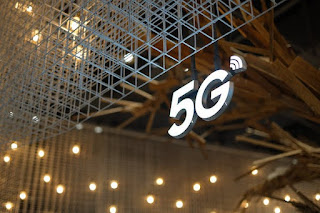I. Introduction
Hello tech enthusiasts! Today, I'll be covering two of the most hotly debated topics in tech from him.
5G and Smart Cities. His 5G , the latest and fastest wireless networking technology, has the potential to transform the way we connect and interact. And 5G will play a key role in shaping the future of our cities, as metropolitan areas emerge with Smart Cities that are equipped with cutting-edge technology and improve the quality of life for their residents.
But before we get into the details, let's go over the basics. 5G or fifth generation is the latest and most advanced cellular network technology. It offers faster network speeds, lower latency, and improved network stability than previous generation cellular networks.
II. Benefits of 5G for Smart Cities
Smart Cities, on the other hand, are metropolitan regions that employ technology and data to improve their citizens' quality of life. They want to make cities that are more efficient and sustainable by utilizing technologies in areas like transportation, energy, and waste management. Smart Cities may also take their capabilities to the next level with 5G networks.
Now consider the advantages of 5G for Smart Cities. We may expect enhanced connection for people and gadgets with 5G . This means we can use quicker and more dependable internet connections, as well as connect more devices at once. 5G has the potential to enhance public safety and emergency response as well. Faster and more dependable connectivity will allow first responders to get important information.
III. examples of 5G implementations in Smart Cities
Now that we've discussed the benefits of 5G for Smart Cities, let's take a look at some real-world instances of 5G deployment in cities across the world.
Beginning with smart traffic systems, 5G is being utilized to enhance traffic flow and promote road safety. Connected to 5G networks, smart traffic signals, for example, may modify their timing in real time to fit traffic loads, decreasing congestion and enhancing safety. In addition, 5G -powered linked cars may offer drivers with real-time traffic information, minimizing the need for guesswork and making roads safer for everyone.
Then there are smart lighting systems. City planners can use 5G to remotely monitor and regulate lighting installations, modifying brightness and schedules depending on real-time data. This not only saves energy but also makes the atmosphere safer and more inviting for inhabitants and visitors.
Another intriguing example of 5G in action is smart trash management. Cities can manage waste inventories and optimize collection routes using 5G -connected sensors and cameras to decrease waste and increase efficiency. Furthermore, with remote monitoring, cities can respond to problems as they develop, making garbage management more efficient and sustainable.
Finally, public health and safety may be monitored remotely. Cities can monitor conditions in real time with 5G networks, allowing them to respond to health and safety problems more swiftly. Cities, for example, may monitor air pollution and take action to limit dangerous emissions using 5G -powered air quality monitoring devices.
These are just a handful of the many fascinating applications of 5G in Smart Cities. And, as 5G technology continues to innovate and progress, we can expect to see even more intriguing and profound deployments in the future. Keep an eye out if you're interested in technology, since the future of cities is about to get a whole lot smarter!
IV. Challenges and limitations
Let's take a step back and look at some of the issues and constraints of deploying 5G in Smart Cities.
The first consideration is cost. Deploying and maintaining 5G networks may be costly, and many towns struggle to fund these initiatives. It's similar like purchasing a brand new sports car: it looks amazing, but it's also rather expensive.
There are other technological constraints and security issues to consider. 5G technology is still in its early stages, and many questions remain concerning its potential and limits. And, like with any new technology, security issues must be addressed. Cities must guarantee that their 5G networks are secure and safe from cyber attacks.
Another problem for cities is competing with other technologies and networks. With so many new technologies and networks, cities must carefully analyze their alternatives before deciding which one is best for them. It's like having to pick a flavor of Baskin-Robbins; there are so many delectable alternatives, but you can only pick one!
Finally, collaboration and coordination among city stakeholders are required. With so many various departments and organizations engaged in a smart city project, it's critical that everyone works toward the same objective. It's similar to a team sport in that everyone must work together to win.
These are only a few of the difficulties and limits that cities confront while implementing 5G technology.
V. Conclusion
To summarize, 5G networks have the potential to greatly increase smart city connectivity and efficiency. The benefits of 5G are numerous, ranging from expanded connectivity and improved public safety to improved transportation and sustainable urban services. While there are still some obstacles to solve, the future of 5G in Smart Cities seems optimistic, with significant development and innovation in this field expected in the coming years. So strap on and prepare to be amazed, because the future of cities is about to get a whole lot smarter.


nice
ReplyDelete